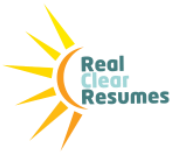The final writer I want is highlight is my favorite of the four, and also a Nobel Prize winner – Ernest Hemingway. Since high school, I’ve always appreciated his work – of the four, Hemingway is the most adventurous and dramatic – though his death is the saddest – he died a shell of the man he was. But generations of high school and college students have wanted to imitate his worldwide travels, writing style and overall joie de vivre.
Hemingway’s clear, descriptive ability to paint so much with so few words is part of what has made his work so popular. It pulls the reader into the narrative and some how few words create a full imaginative setting. Plus his language choices are spare – words of fewer syllables. This helps to make his work accessible too. Hemingway wanted to make sure his readers understood what he wanted to describe and where his stories led.
In Resume World, there is a similar fundamental goal – to showcase a narrative of talent and deeds, while connecting the dots in a way that makes it easier for readers to grasp who you are professionally. But pulling this off is where the hard part comes – and unfortunately, many people make the choice of limiting their narrative because they don’t know how to achieve that happy balance of content and context.
If the resume is too thin and light, the reader will not understand how you have played crucial roles at your positions – and maybe this is because you don’t understand it either. Of course, working with a professional will help you to identify your narrative depth and effectively sketch out your career arc. But your goal should always be to have a flexible tool that allows you to respond to specific job specs with a customized “sales” document.
Quick Action Tips:
- Focus on limiting your description of job scope to top 3-5 functions with 3-5 best-of-best accomplishments for each job, with the most weight usually given to the 3 most recent ones.
- Make sure your achievements highlight results that are as specific and substantial as possible – metrics, impact and scope, etc.
- Use the compact Situation-Action-Result (SAR) template with the achievement being sketched out in 2-3 lines max.
- Avoid trying to cram everything into a single page – unless you are a recent college grad, it is impossible to properly package a 10-20 year career into so tight a space!







Leave A Comment